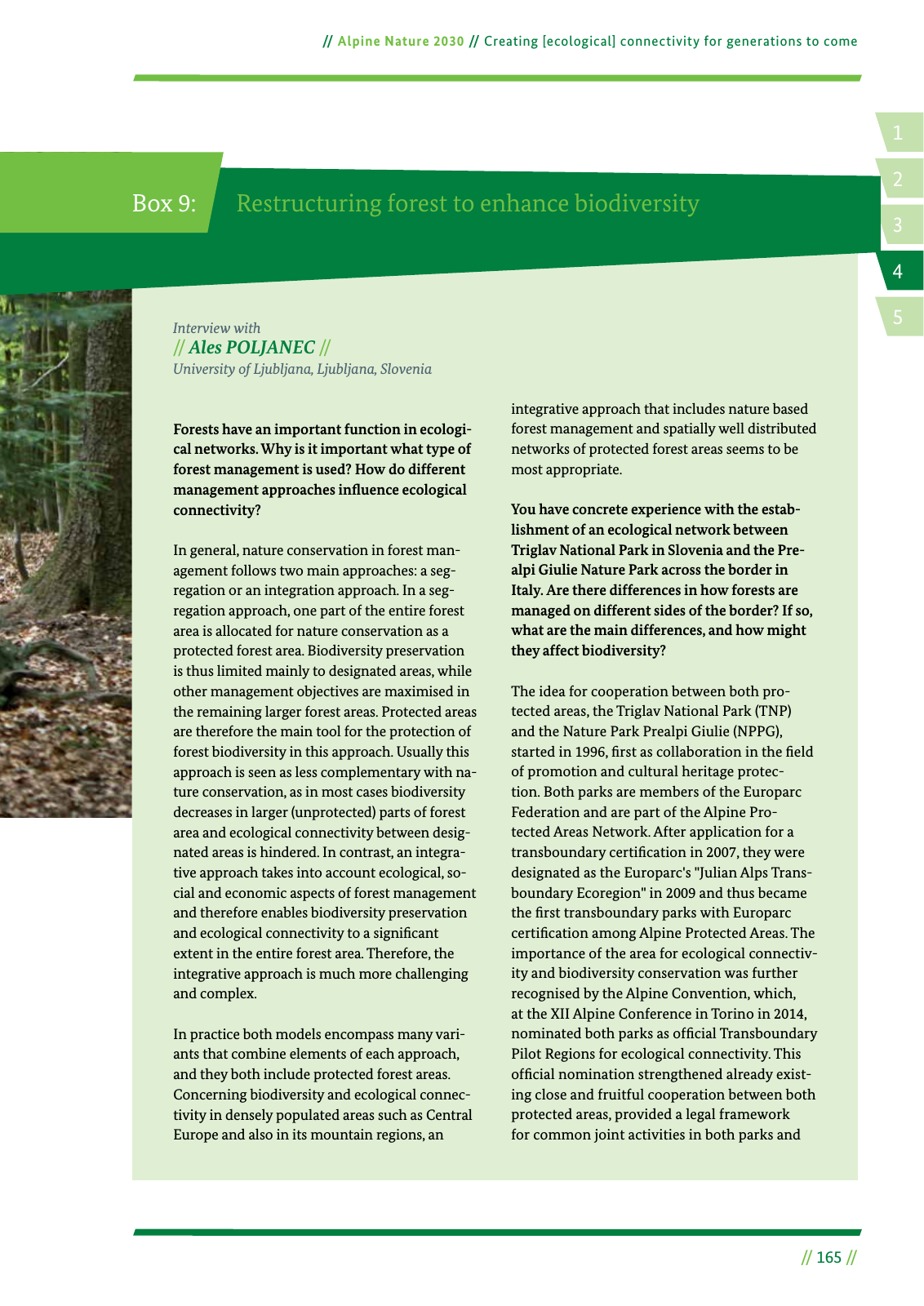14 2 5 3 Alpine Nature 2030 Creating ecological connectivity for generations to come 165 Forests have an important function in ecologi cal networks Why is it important what type of forest management is used How do different management approaches in uence ecological connectivity In general nature conservation in forest man agement follows two main approaches a seg regation or an integration approach In a seg regation approach one part of the entire forest area is allocated for nature conservation as a protected forest area Biodiversity preservation is thus limited mainly to designated areas while other management objectives are maximised in the remaining larger forest areas Protected areas are therefore the main tool for the protection of forest biodiversity in this approach Usually this approach is seen as less complementary with na ture conservation as in most cases biodiversity decreases in larger unprotected parts of forest area and ecological connectivity between desig nated areas is hindered In contrast an integra tive approach takes into account ecological so cial and economic aspects of forest management and therefore enables biodiversity preservation and ecological connectivity to a signi cant extent in the entire forest area Therefore the integrative approach is much more challenging and complex In practice both models encompass many vari ants that combine elements of each approach and they both include protected forest areas Concerning biodiversity and ecological connec tivity in densely populated areas such as Central Europe and also in its mountain regions an integrative approach that includes nature based forest management and spatially well distributed networks of protected forest areas seems to be most appropriate You have concrete experience with the estab lishment of an ecological network between Triglav National Park in Slovenia and the Pre alpi Giulie Nature Park across the border in Italy Are there differences in how forests are managed on different sides of the border If so what are the main differences and how might they affect biodiversity The idea for cooperation between both pro tected areas the Triglav National Park TNP and the Nature Park Prealpi Giulie NPPG started in 1996 rst as collaboration in the eld of promotion and cultural heritage protec tion Both parks are members of the Europarc Federation and are part of the Alpine Pro tected Areas Network After application for a transboundary certi cation in 2007 they were designated as the Europarc s Julian Alps Trans boundary Ecoregion in 2009 and thus became the rst transboundary parks with Europarc certi cation among Alpine Protected Areas The importance of the area for ecological connectiv ity and biodiversity conservation was further recognised by the Alpine Convention which at the XII Alpine Conference in Torino in 2014 nominated both parks as of cial Transboundary Pilot Regions for ecological connectivity This of cial nomination strengthened already exist ing close and fruitful cooperation between both protected areas provided a legal framework for common joint activities in both parks and Box 1 9 Restructuring forest to enhance biodiversity Interview with Ales POLJANEC University of Ljubljana Ljubljana Slovenia

Hinweis: Dies ist eine maschinenlesbare No-Flash Ansicht.
Klicken Sie hier um zur Online-Version zu gelangen.
Klicken Sie hier um zur Online-Version zu gelangen.